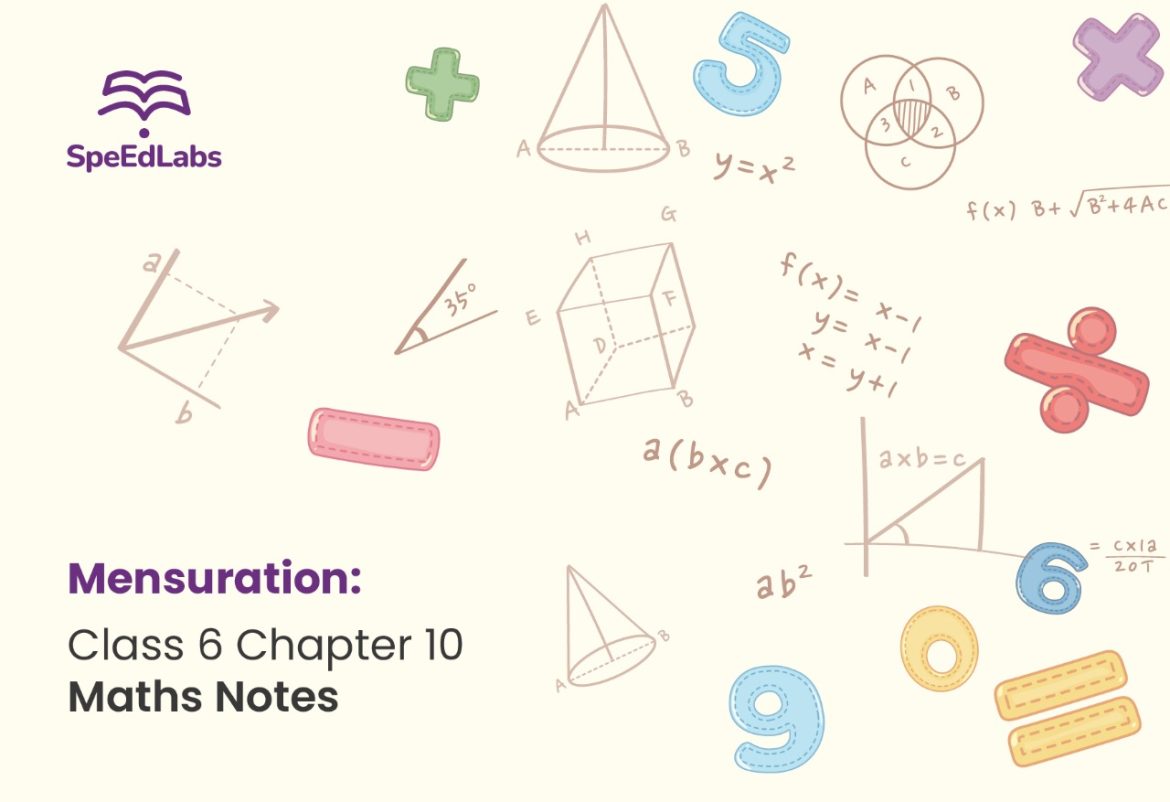Class 6 Maths chapter 10 Mensuration free PDF Download: CBSE Class 6 Maths Chapter 10 Mensuration Revision Notes are provided by SpeEdLabs. Revision notes on Mensuration for Class 6 will help students understand and revise the concepts from the very beginning. It is vital to understand the concepts and theories taught in Class 6 as they prepare students for higher class challenges. Those preparing for CBSE exams can access textbooks, revision notes, and previous year’s maths questions from SpeEdLabs’ official website.
To score more marks in CBSE board exams, you can also register online for NCERT Class 6 Science coaching on SpeEdLabs. Students can access free CBSE Solutions (NCERT) and other study materials on SpeEdLabs’ website. If you are looking for the better solutions for Class 6 Maths, you can download the NCERT Solutions to help you revise the entire syllabus and score higher marks.
NCERT Class 6 Maths Chapter 10- Mensuration Revision Notes
Introduction to Mensuration
Mensuration
- Mensuration is the branch of mathematics that deals with the measurement of length, area or volume of various geometric shapes.
Shapes
- A shape is the form of an object.
- Examples of two-dimensional shapes are square, rectangle and triangle, and of three-dimensional shapes are cube, cuboid and sphere.
Perimeter
- Perimeter is the total length or total distance covered along the boundary of a closed shape.
- Perimeter of a circle is also called the circumference of the circle.
Perimeter of a Triangle
- Perimeter of triangle = Sum of lengths of all sides = a + b + c.
- If the given triangle is equilateral, that is if all the sides are equal (a = b = c), then its perimeter is equal to 3 × length of one side of the triangle.
Perimeter of a Rectangle
- Perimeter of a rectangle = 2 × (length + breadth)
Perimeter of a Square
- Perimeter of square = 4 × length of a side = 4a
Perimeter of an ‘n’ sided polygon
- A polygon is a closed shape made up of line segments.
- Perimeter of n sided polygon = n× length of one side.
- Example: Length of each side of a hexagon is a cm, then:
Perimeter of the hexagon = 6a cm
Perimeter of Irregular Shapes
- Irregular shapes are the shapes which do not have all sides and angles equal.
- The perimeter of irregular shapes is equal to the total length covered by the shape.
Area
- Area is the total amount of surface enclosed by a closed figure.
Area of Square
- Area of a square = Side × Side =Side2=a2, where a is the length of each side.
Area of Rectangle
- Area = length ( l ) × breadth ( b)
Area of a Triangle
- Area of triangle = (1/2) × base × height = (1/2) × b × h
Areas of different types of triangles
- Consider an acute and an obtuse triangle.
Area of each triangle = (1/2) × base × height = (1/2) × b × h
Visualisation of Area
- Area of rectangle = l×b
- Area of square = a×a
Area of Irregular Shapes
- Area of an irregular figure can be calculated:
Step 1: Divide the irregular shape into regular shapes that you can recognize (e.g. triangles, rectangles, circles and squares)
- Step 2: Find the area of these individual shapes and add them. Sum will be the area of the irregular figure.
Example: Area of the given figure = Area of MNCB + Area of AMGH + Area of EFND
= [5 × 9 + 4 × 2 + 3 × 3] cm2
= [45 + 8 + 9] cm2
=62 cm2
Also published on Medium.
